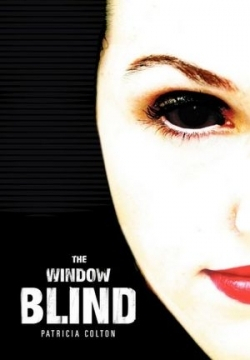The Window Blind
In The Window Blind, thirty-five-year-old Caterina Cammino and eighteen-year-old Tyler Beck collide on the beach one fateful night, each nursing addictions and wounds from loss. Caterina lost her innocence to rape at age seventeen, the same summer that saw the tragic death of her best friend Tracy. She numbs her pain with alcohol, while Tyler matches and goes her one better, also using heroin to drown the memories of his fractured childhood and the death of his only friend and spiritual mentor, Robie, in war.
When these two wounded souls meet, a Watcher, an angel-like being, named Miranda transports the broken parts of them to a timeless dimension so they can heal each other. In this contemporary Earthly plane known as 10-71, Tyler becomes sober Ty and Caterina becomes Cat, her seventeen-year-old self. While the adolescents struggle to make sense of their respective misfortunes and “learn how to live,” as Miranda puts it, Caterina and Tyler strike up a bumbling connection. While in both dimensions, which exist like slats between window blinds, Caterina and Tyler grope toward wholeness.
To her credit, Patricia Colton creates a believable world of multiple dimensions, higher powers, benevolent beings, and vibrations without seeming too bizarre or trite. Indeed, it is pleasant to think entities like Miranda exist to assist suffering humans. The characters accept the existence of multiple dimensions with the appropriate amount of fear, wonderment, and inquisitiveness. By transporting the sorrowful parts of her characters to another dimension, the author presents a poignant commentary on grief by revealing the fracturing nature of pain.
And dissociation in the face of pain is something to which nearly all readers can relate. Colton depicts addiction with unstinting honesty. Even as addiction harms Caterina and Tyler, it is also, paradoxically, what brings them together in their earthly dimension. The notion of two addicts helping each other instead of participating in mutually assured destruction is refreshing.
Caterina, Tyler, Cat, and Ty all come across as scarred but not ruined. Colton’s masterstroke lies in delineating her characters’ suffering but not defining them by their hurt. The Window Blind also makes effective use of snappy dialog, pointed discussions of music, and the absolutely ingenious use of an iPod. Further, Colton’s lyrical, often alliterative use of language, including similes, only makes the story more evocative.
When Tyler ventures into the sea, the author comments, “the foamy waves weaved between his calves like the caress of a cold cat seeking warmth.” This incisive description plunges the reader into the reality of dimension 10-71 or the mystical world of 10-17. Anyone who enjoys the notion of taking a multidimensional, thought-provoking journey will want to open The Window Blind.
Reviewed by
Jill Allen
Disclosure: This article is not an endorsement, but a review. The publisher of this book provided free copies of the book and paid a small fee to have their book reviewed by a professional reviewer. Foreword Reviews and Clarion Reviews make no guarantee that the publisher will receive a positive review. Foreword Magazine, Inc. is disclosing this in accordance with the Federal Trade Commission’s 16 CFR, Part 255.

